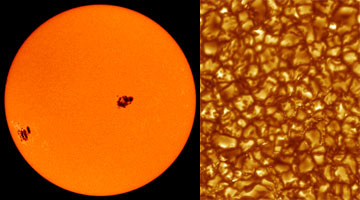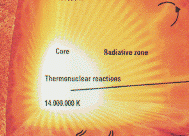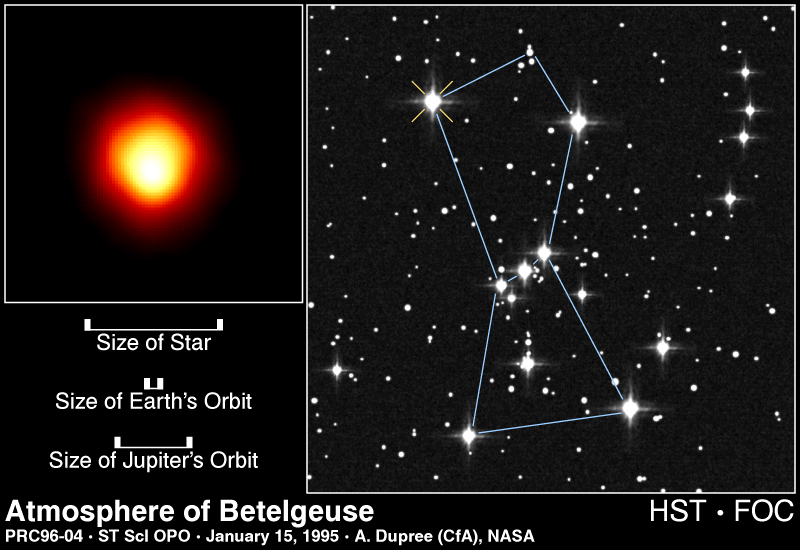An artist's picture of the solar interior. Energy is generated in the
solar core
NASA
The Solar Core
The solar core is made up of an extremely hot and dense gas (in the
plasma state). Despite a density of 160,000
Kg/m3, the temperature of 15 million kelvins
(27 million degrees Faranheit) prevents the core from reaching the solid state.
The core is the region where the energy of the Sun is produced.
The density and temperature are such that nuclear
fusion reactions can take place: these reactions release energy both in the
form of electromagnetic energy (gamma rays) and particles (in particular
neutrinos). Despite the reactions, the Sun's core is a very dark place!
You might also be interested in:

Plasma is known as the fourth state of matter (the first three states being solid, liquid and gas).Matter in ordinary conditions on Earth has electrons that orbit around the atomic nucleus. The electrons
...more
The Kelvin scale is a temperature scale that is often used in astronomy and space science. You are probably more familiar with the Celsius (or Centigrade) scale, which is part of the metric system of measures,
...more
The neutrino is an extremely light (and possibly massless) neutral particle. The neutrino belongs to the family of leptons, the particles that interact through the so-called weak force. For this reason
...more
Most of the energy we receive from the Sun is the visible (white) light emitted from the photosphere. The photosphere is one of the coolest regions of the Sun (6000 K), so only a small fraction (0.1%)
...more
The solar core is made up of an extremely hot and dense gas (in the plasma state). Despite a density of 160,000 Kg/m3, the temperature of 15 million kelvins (27 million degrees Faranheit) prevents the
...more
When the temperature in the core of a star reaches 100 million degrees Kelvin fusion of Helium into Carbon occurs (three Helium nuclei combine to form a nucleus of Carbon). In the same range of temperature
...more
A plot of the binding energy per nucleon vs. atomic mass shows a peak atomic number 56 (Iron). Elements with atomic mass less then 56 release energy if formed as a result of a fusion reaction. Above this
...more














